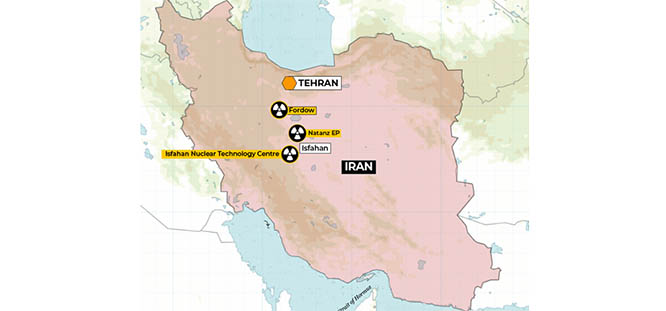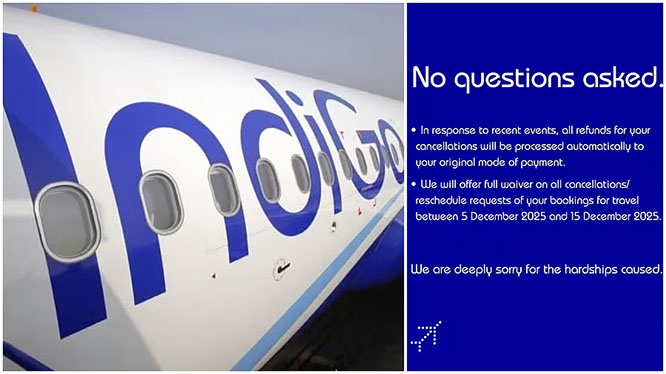
The United States has launched a direct military attack on Iran’s nuclear infrastructure, bombing three key facilities at Fordow, Natanz, and Isfahan. The move, ordered by U.S. President Donald Trump, comes just days after Israel initiated an unprecedented offensive on Iran.
“We have completed our very successful attack on the three nuclear sites in Iran,” Trump declared on Truth Social, referring to the strikes as a “spectacular military success.” The U.S. Air Force deployed stealth B-2 bombers armed with 13,000 kg bunker-busting bombs, while U.S. Navy submarines reportedly fired cruise missiles at strategic targets.
The sudden escalation has triggered alarm across the globe, evoking memories of the 2003 U.S. invasion of Iraq and raising fears of a wider regional war.
What Exactly Did the U.S. Bomb?
The targets were three of Iran’s most significant nuclear sites:
• Fordow: A deeply buried underground uranium enrichment facility near Qom, heavily fortified and previously considered nearly impervious to aerial attack.
• Natanz: Iran’s largest and most well-known enrichment complex. It was previously hit by Israeli strikes on June 13 and has long been seen as the heart of Iran’s nuclear ambitions.
• Isfahan: A vital research and uranium conversion center that plays a key role in processing nuclear materials for reactor use.
According to U.S. media, the attack involved a combination of bunker buster bombs and cruise missiles, marking the first known combat use of the U.S. military’s GBU-57 Massive Ordnance Penetrator — capable of piercing dozens of meters of concrete.
How Much Damage Was Done?
President Trump claimed Iran’s enrichment capabilities were “completely and totally obliterated.” However, Iran offered a sharply different account.
Iranian officials said the Fordow facility had been evacuated in advance, minimizing any potential damage. The Atomic Energy Organization of Iran (AEOI) confirmed that no radiation leaks had occurred, and that field surveys found no contamination near any of the targeted sites.
Iranian authorities dismissed the attack as largely symbolic and vowed to continue their nuclear program, calling it the result of the sacrifices of the country’s “nuclear martyrs.”
The International Atomic Energy Agency (IAEA) also reported no rise in off-site radiation levels. Director Rafael Grossi announced that the agency would hold an emergency meeting on Monday to assess the full scope of the strikes.
Will Iran Retaliate Against the U.S.?
Iran has condemned the strikes as an act of war. Its Foreign Ministry called the attack a “dangerous escalation” and declared that Iran reserves the right to respond with full force to protect its sovereignty.
“The Islamic Republic of Iran considers it its right to stand against U.S. military aggression and defend national interests,” a statement said.
Military experts say retaliation is highly likely. Iran could:
• Target U.S. military bases in the region — many of which are within range of Iranian drones and missiles.
• Disrupt global shipping in the Persian Gulf, threatening oil supply routes.
• Activate proxy forces in Iraq, Syria, and Lebanon to strike U.S. or allied targets.
• Consider withdrawing from the Nuclear Non-Proliferation Treaty (NPT) — a move that could further escalate global tensions.
Iran has already signaled its intent by deploying the Kheibar Shekan missile, one of its most advanced, in a retaliatory strike on Israel.
Global Reaction: A Region on Edge
UN Secretary-General Antonio Guterres said he was “gravely alarmed,” warning that the U.S. strikes posed a direct threat to international peace and security.
“This is a dangerous escalation in a region already on the edge,” Guterres said. “There is a growing risk that this conflict could spiral out of control, with catastrophic consequences.”
Analysts believe the U.S. move might entangle it in a long-term conflict. Stephen Zunes, a Middle East expert at the University of San Francisco, said Iran has several “painful” options at its disposal and warned of a broad regional backlash.
Adam Weinstein, from the Quincy Institute, warned that this could be just the beginning. “The U.S. is now at risk of being pulled into a war of choice with Iran. What started as a single strike could become an open-ended escalation,” he said.
The Road Ahead
While the U.S. may have delivered a powerful military blow, the long-term consequences remain uncertain. Iran insists its nuclear program will continue. The region remains on high alert. And the prospect of a wider conflict now looms larger than ever.
As the dust settles, the world is watching closely — not just to assess the damage, but to see what comes next.







Comments
Add new comment